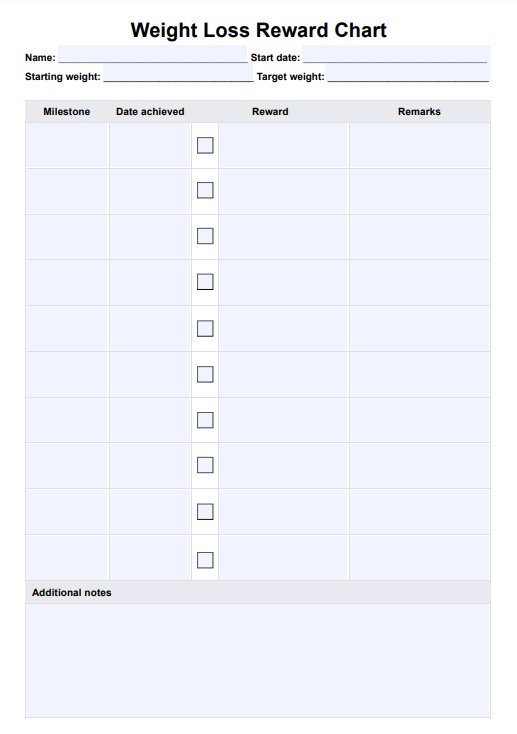Yes, rewards can be highly effective for weight loss as they reinforce positive behaviors and provide motivation. Research suggests that non-food-related rewards linked to achieving a specific milestone or weight loss goal can help sustain long-term engagement and adherence to a weight loss plan.

Weight Loss Reward Chart
Teach clients how to leverage non-food-related rewards to encourage weight loss, with our Weight Loss Reward Chart Template. Try it now!
Weight Loss Reward Chart Template
Commonly asked questions
The 50% rule for weight loss refers to focusing on smaller goals incrementally by achieving 50% of your long-term goal initially. This strategy helps maintain motivation by creating manageable short-term successes, which build confidence and consistency.
Rewards should align with your client's interests and preferences to keep them motivated. Examples include cinema tickets, spa treatments, new clothing, fitness equipment, or experiences such as a weekend getaway or photoshoot. Non-food-related rewards are especially encouraged for healthy habit formation.
EHR and practice management software
Get started for free
*No credit card required
Free
$0/usd
Unlimited clients
Telehealth
1GB of storage
Client portal text
Automated billing and online payments











